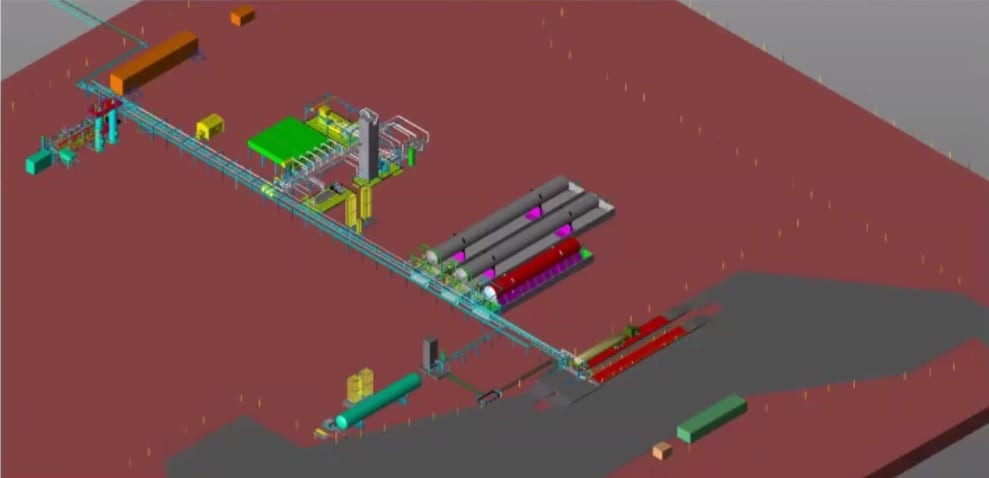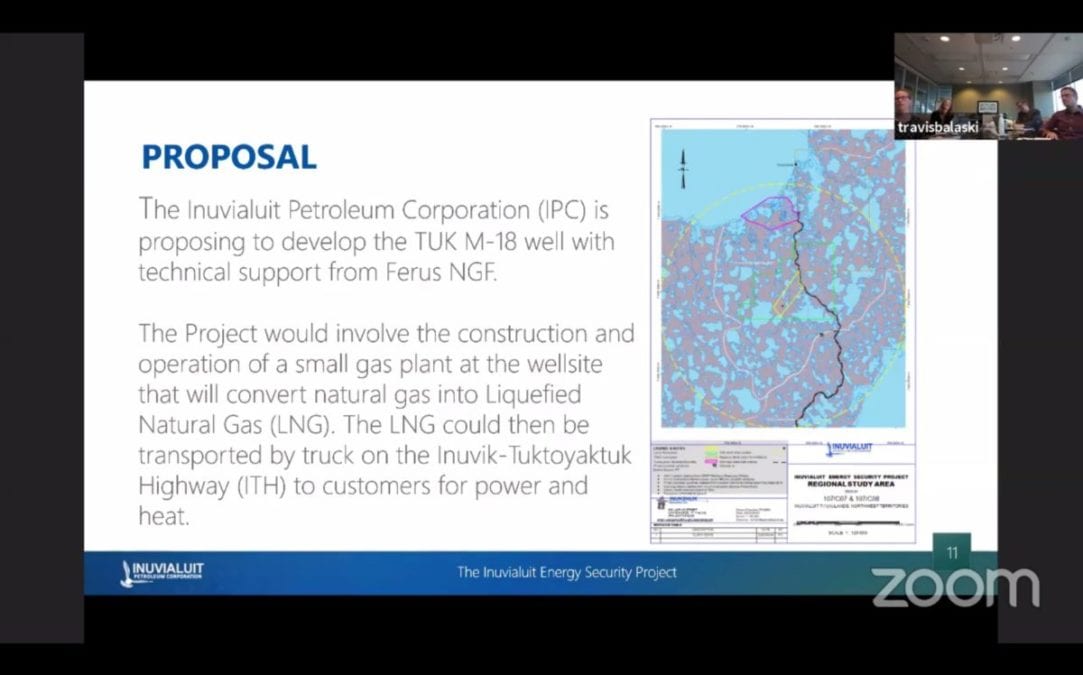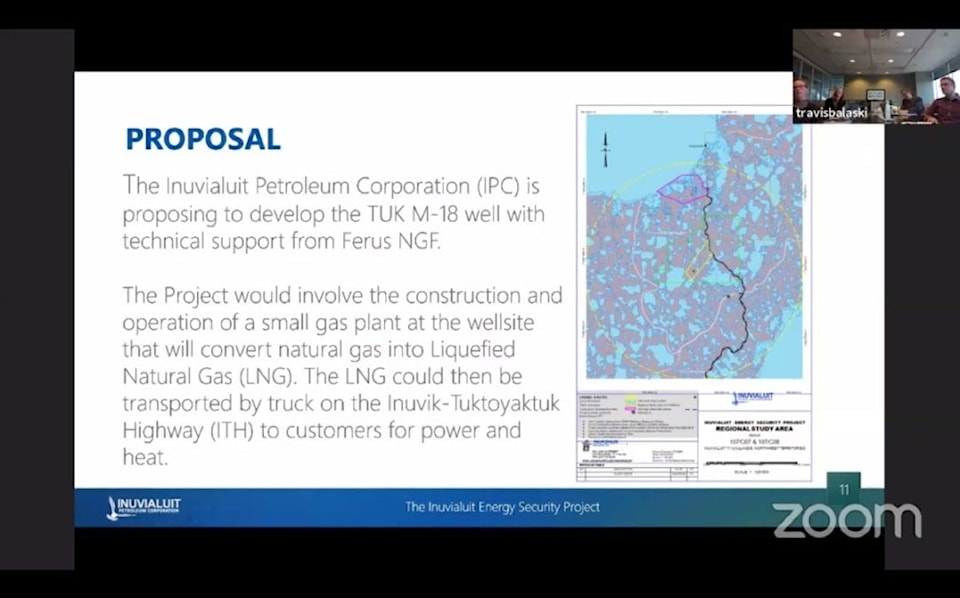Inuvialuit Regional Corporation (IRC) is hoping to re-establish an old natural gas well to replace its ageing Ikhil gas well and is exploring the possibility of establishing a small Liquefied Natural Gas (LNG) plant at the site to provide a cleaner alternative to diesel.
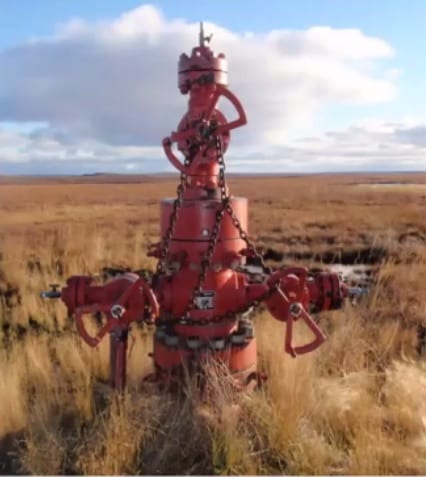
(photo courtesy of Town of Inuvik)
While still a greenhouse gas, natural gas is considered "cleaner" than diesel in the sense that it produces less sulphur oxide and nitrogen oxide, produces 40 per cent less carbon dioxide and does not produce soot or heavy metals. LNG in particular dissipates when spilled on water or soil and leaves no residue, but is kept at -162 C in storage. It is not flammable while in liquid form.
Work is currently in the preliminary stages, with IRC's partner Ferus Natural Gas Fuels Inc. (Ferus NGF) speaking with stakeholders in the area, including the Town of Inuvik.
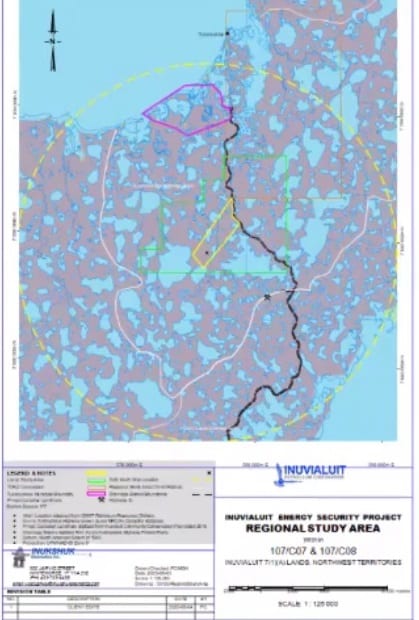
(photo courtesy of Town of Inuvik)
Representatives from Ferus NGF and Inuvialuit Petroleum Corporation, an IRC subsidiary, made a presentation to Town Council June 15.
"The whole project is for the purpose of addressing the energy security issue that many northerners face, but particularly northerners that are at the end of a very long road," said IPC special advisor Kate Darling. "The commodity price is nothing near the landing cost of natural gas, propane and diesel that are transported from thousands of kilometres away. The issue is not just the distance, but also the disruptions that can occur along the transportation routes."
Darling told council currently Inuvik gets propane from Taylor, B.C., LNG from Grande Prairie, Alta. and diesel from Edmonton, covering distances of 2,500 to 3,000 kilometres.
The project includes a plan for remediation of the current Ikhil J-35 gas well, which has served as a backup unit for the IRC but is near the end of its lifespan — Darling said it had about two years left in service. Instead, TUK M-18, a 3,000 metre deep well that was dug almost two decades ago but never put into use, will be remediated and put into production alongside the proposed gas plant. Currently, Canadian Natural Resources Limited owns the sump but the Inuvialuit Land Administration has the final say on how it will be remediated.
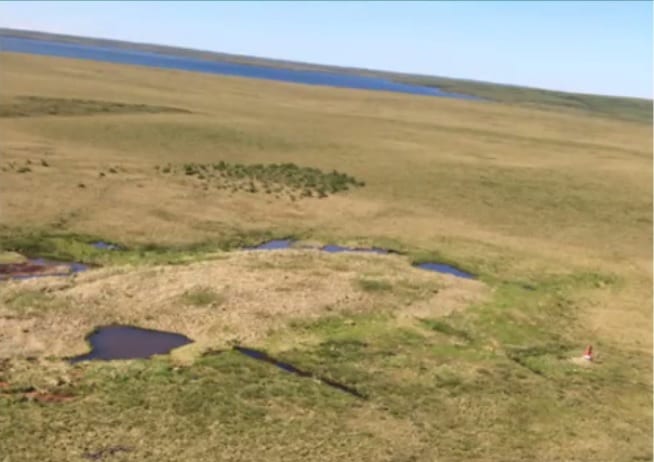
A four kilometre all-weather access road, which would cross one creek, would also be constructed to truck the LNG to customers. Current estimates on traffic is between five to eight trucks every 24-hours to-and-from the facility. Ferus NGF Canadian-business president Travis Balaski said the plant would be in operation for at least 50 years and the TUK M-18 site has an estimated 278 billion cubic feet of usable gas.
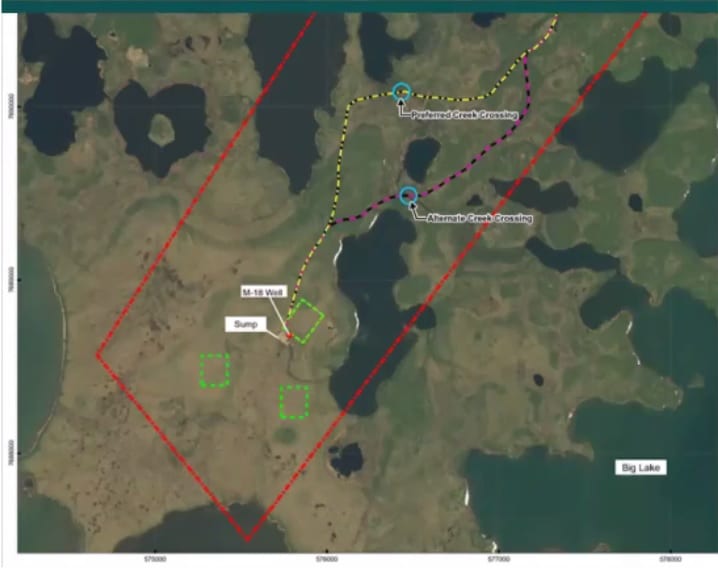
"The first phase of this project is really just contemplating getting natural gas to Northwest Territories Power Corporation (NTPC) in Inuvik," said Balaski. "TUK M-18 is really the only well that's easily accessed without having to drill a new one. Most of what exists in the Beaufort Delta has been remediated or capped and would be very difficult to put back into production."
He added the other initial customers would be Inuvik Gas Ltd and Tuktoyaktuk NTPC.
Darling pointed out during the presentation that 89 per cent of Inuvik houses and businesses use natural gas heating and a 2017 LNG power feasibility study calling for converting diesel generators to LNG in Tuktoyaktuk could also be implemented. She said the project could reduce greenhouse gas emissions in the Beaufort Delta by thousands of tonnes per year.
According to the GNWT, in 2017-2018 Inuvik drew approximately 39 per cent of its electricity from natural gas, 60 per cent from diesel generation and the remaining one per cent from solar collection.
A timeline for the "Inuvialuit Energy Security Project" was also presented, anticipating a design for the LNG plant and regulatory approvals to be in place by the end of the year, with worker training and construction to begin in 2021. Trucks carrying LNG to customers are hoped to be rolling out of the TUK M-18 well site by spring of 2022. Construction will be worked around migratory bird seasons to minimize impact on wildlife.
